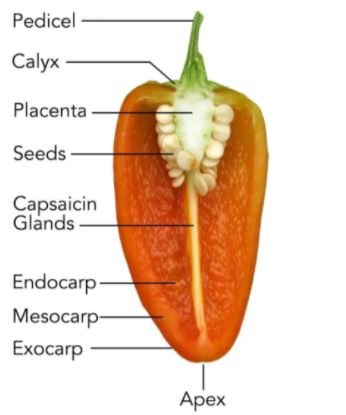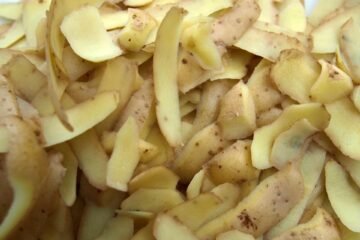My tryst with chillies, or mirchi, started with this bit of untruth from my father.
“You won’t be able to speak properly if you don’t eat chilli. Haven’t you heard how clearly parrots speak? That’s because they eat chillis!”
I grew up in a household where both my parents love chillies, especially green chilli. They would make a mustard-oil laden green chilli pickle. A common side my father asked for during meals are green chilli roasted on the tawa. And more than my father, it is my mother who loves green chillies. Be it the crunchy fresh chillies to eat along with a regular dal-chawal meal or the cooked variety cleanly chopped into a pakora batter or an omelette. In fact, my mother is infamous for once making a sabzi out of green chillies and having it with rotis for lunch!
As I grew, I also began to love chillies. It started off, as perhaps a lot of things do with young adults in India, with Maggi. My favourite version till date is Maggi cooked with onion and green chillies. It continued with being unable to ignore the bright red-colored laal maas in Jaipur, in spite of my aversion to red meat. The love grew a little more upon visiting the wholesale mirchi market of Spice Market in Old Delhi. It is a dark side-alley within a larger market, looking picturesque with heaps of red chillies kept out for display in rustic-looking gunny sacks. Even the smell of the alley has the burn of chillies, and I always wonder how the shopkeepers there manage to sit in their shops day in and day out. But burn apart, this is the area where I learnt how there are different varieties of chillies in India— some used for spice and others used for color.
The love for chilli grew as I started cooking more and experimenting with different cuisines. I realised that mirchi is different from chilli. I learnt how the terms peppers and chillies are wrongly interchanged. I learnt that there is a lot to learn about the world of chillies.
Here’s a little bit about what I learnt.
With Love From Mexico

Although we cannot imagine our dishes without chilli, the chilli pepper was actually unknown to India till 1498 AD. The chilli pepper is an original inhabitant of Mexico, being one of the first self-pollinating crops to be cultivated in the region of Mexico, Central America and some areas of South America. They have been consumed in their source region since about 7500 BC. Indeed, the very name Chilli, is derived from the Nahuatl (a language spoken in central Mexico since the seventh century CE) word chīlli.
When the Italian voyager Christopher Columbus reached the Caribbean, they encountered this exotic spice. It caused the same hot and spicy sensation that black pepper caused, and was hence called pepper by them.
Having reached Europe with Columbus, the chilli spread its fame in many countries there, less as a spicing agent, and more as a decorative plant. However, the Portuguese were clever tradespeople and realised that its trade value would be high in the Asian market due to its resemblance to the spiciness of the black pepper. And thus, they started procuring chilli from east Brazil and traded it with Indians in Goa. This is how, by the end of the 15th Century, India got its chilli.
The Science Behind Chillies
Evolution of Chillies
Botanically, chilli is the fruit of a pretty little plant from the genus Capsicum. It is a member of the Solanaceae, or nightshade, family. Among its other family members are the potato, tomato and eggplant. Very frankly, the next time you make that spicy aloo and baingan sabji, know that you are committing virtual genocide!
If you are anything like me, then your idea of chillies would be green chilli, Kashmiri lal mirch— the one we use for color, and the other thin red chilli— the one we use for mirchi. Oh, and capsicum and bell peppers! Those are always an afterthought. If you are a trivia enthusiast, you’d know the super hot Naga chilli as well.
However, let’s go about understanding the types of chillies more scientifically.
Chillies have five domesticated species— Capsicum annuum, Capsicum frutescens, Capsicum chinense, Capsicum pubescens and Capsicum baccatum. Let’s look at each in detail:
- Capsicum annuum: Capsicum annuum is the star species of chillies. It consists of all the commonly known varieties like jalapeños, cayenne, etc. In India, Karnataka’s Byadagi chilli and Kerala’s Edayur chilli are from this species.
- Capsicum frutescens: Two commonly known Capsicum frutescens chillies are tabasco and piri piri. In India, these are grown in parts of South India and North-east India. The famous Bangalore torpedo chilli comes from this species.
- Capsicum chinense: This variety consists of some of the hottest chillies like the habanero and India’s very own Naga Chilli. It is grown in Kerala and the North-eastern states. Even India’s most exported chilli, the Guntur Sannam from Andhra Pradesh, is related to this species.
- Capsicum pubescens: This variety is not available in India, so very self-obsessedly, we won’t talk about it.
- Capsicum baccatum: Ditto
Some other chillies like the famous Bhut Jolokia are a cross-species created by crossing two species like Capsicum annuum and Capsicum frutescens.
Chemistry of Chillies
Now that we know about the biology of chillies, let’s continue the science section with the chemistry of it. The two most important characteristics and role of chilli is to give taste and give color.
The spice or pungent taste of the chilli is due to a chemical group known as capsaicinoids., of which capsaicin is the most common. The more capsaicin a chilli has, the hotter it is. The lesser it has, the ___ it is (fill in the blanks to check how attentively you are reading this;)). Okay, fine, the milder it is. This chemical called capsaicin binds to the pain receptors of the mouth and throat. These pain receptors then snitch to the brain-stem and thalamus of the brain through a chemical called TRP1, causing the sensation of pain and heat. The capsaicin production is a type of adaptation of the chilli plant to protect itself against herbivores. Well, it successfully did so that, apart from the omnivore called human. 🙂
Interestingly, chillies grown in water-stress, or in conditions of less water, are hotter in nature since the capsaicin concentration increases in the chilli fruit.
The heat level of the chillies is measured using Scoville heat units (SHU) which measures the capsaicinoid content (parent group of capsaicin) in a chilli variety. India’s Bhut jolokia (Ghost pepper) is one of the hottest chillies in the world as per this unit. It scores 10,41,427 SHU! In comparison, the bell pepper scores zero.
Coming to the color, the color of the chilli is the result of pigments present in the middle layer of its wall. The green color in unripe chilli is due to the abundance of our dear old friend from photosynthesis, i.e. the chlorophyll. In some cases, the chlorophyll might be missing, giving rise to, believe it or not, white chilli! But as the fruit ripens, the chlorophyll starts getting outnumbered by red pigments like capsanthin and capsorubin or, yellow-orangish pigments like lutein and beta-carotene.
The color of the chilli is measured in three ways— the surface color, the extractable color and carotenoid profile. The surface color, evident from its name, measures the intensity of color on the chilli’s surface, and is important for chillies which are sold whole. The carotenoid profile measures the separate carotenoid content of the chilli, and is mostly used for research purposes. The most important measure is that of extractable color, i.e., amount of pigment in the chilli. It is relevant to know which chilli to add if you want to turn your matar paneer a deep red. This is measured in ASTA (American Spice Trade Association) units. Kashmiri mirch has an ASTA value of 54.10. The kaddi variety of Byadagi chilli, Karnataka has an ASTA value of 156.9!
Biology of Chillies
One of my favourite dishes is Chicken 65. One of the biggest flavours in the dish is that of green chillies. In order to bring out the taste of green chillies, but not so much the heat, I usually slit them and extract the seeds and the inner ‘lining’ of it. This knowledge has been passed on to me by my parents, but understanding the structure of the chilli will tell us why exactly we do this.
- Pedicel: It is the stalk or stem which attaches the chilli flower, and then the chilli fruit, to the plant
- Calyx: The calyx is the part of the stem which consists of modified leaves called sepals. These sepals were the reason our chilli was protected as a flower and survived to become the chilli pod
- Seeds: This is a no-brainer. This is the reproductive part of the chilli
- Pith/Placenta: This is the inner lining that we remove to reduce the heat of chillies. The line called pith or placenta contains the capsaicin glands, which produce the heat-giving compound called capsaicin in chillies. Thus, the pith has the highest concentration of heat in the chilli pod. However, in superhot chillies like the Bhut Jolokia, the concentration of capsaicin is pretty much high throughout the fruit.
- Endocarp: Endo means inner. Thus, endocarp is the inner wall of a chilli fruit
- Mesocarp: Meso means middle. Thus, this is the middle wall of the chilli fruit. Mesocarp contains the color pigments of the chillies and give them the various hues of green, yellow and red.
- Exocarp: Exo means outer. Hence, this is the outer wall of the chilli fruit.
- Apex: Apex is the blossom end of a chilli fruit.
What's in a Name?
Firstly, is chilli or chilli pepper? Well, in India, we say Chilli, while the Cristopher Columbus-ised version is chilli pepper because as we learnt before, it gave the sensation of heat like black pepper does.
Secondly, is it capsicum or bell pepper? Colloquially in India, the green version is called capsicum in India, while the yellow and red are called bell peppers. However, some countries also call capsicum green pepper. The basic difference is that Capsicum contains a little capsaicin, causing it to have a slight sting to it, while the capsaicin content in the yellow and red peppers is nil.
Mostly, chillies are divided into three groups: bell peppers, sweet peppers, and hot peppers. Bell peppers consist of our green, yellow and red peppers, and come from the Capsicum annuum variety. When bell peppers are grouped with other sweeter varieties of peppers, they are called sweet peppers. And lastly, we have our typical chillies, the hot peppers.
By the way, capsicum is called Shimla Mirch in India because earlier, it was mostly grown and sourced from Shimla region of Himachal Pradesh only.
Economics of Chillies
As we read before, Chilli was one of the most popular products for trade in earlier times. It is the largest exported spice of India, and as of 2019, India is the largest contributor to chilli export in the world. Of the 1.3 million tonnes of Chilli produced in India, 30% is exported. Andhra Pradesh’s Guntur Sannam has the highest market share among imported chillies in India.
Apart from culinary uses, chilli is also commercially used for its capsaicin extract. Capsaicin helps in pain relief, and is hence used by the pharmaceutical industry for medicines.
Along with medicines, extracts of chillies are also used for making cosmetics. Its red pigment might be one of the reason behind the next set of red lipsticks and nail-polish you buy!
Now that we have understood the basics of chillies, let’s take a look at the types of chillies (by this I mean hot peppers) in India. Here’s the complete mindboggling list of types of chillies in India!
References
- Peppers and Chillies, B. Pickersgill, in Encyclopedia of Food Sciences and Nutrition (Second Edition), 2003
- Peppers: Vegetable and Spice Capsicums, Paul W. Bosland, Eric J. Votava
- Peppers and Chilies, A.A.O. Xavier, A. Pérez-Gálvez, in Encyclopedia of Food and Health, 2016
- India signs protocol for export of chilli meal to Chinese markets, Business Standard



